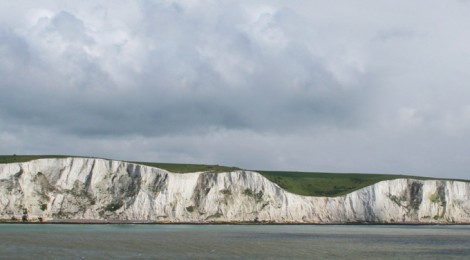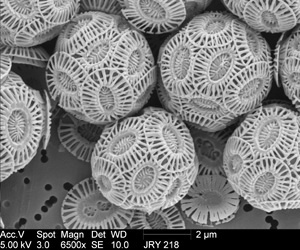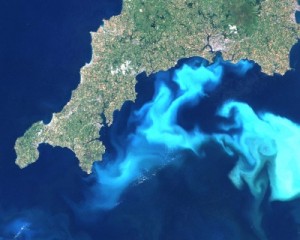
Origin Of White Cliffs Of Dover Phytoplankton Ehux Genome Sequenced
One of the most important groups of phytoplankton Ehux now has a place in the worlds genomic library.
An international consortium has unravelled and sequenced the a vitally important phyto-plankton Ehux genome. They are now working to characterize the workings of individual genes of Emiliana huxleyi.
“Ehux” is a coccolithophore, with an exoskeleton made of calcium carbonate. Over the course of eons the shells of Ehux produced the chalk that is seen in the iconic White Cliffs of Dover on England’s south coast.
Ehux traps as much as 20 percent of organic carbon, derived from CO2, in some marine ecosystems. It also produces important omega-3 fatty acids known for benefits to health that comes from fish oil. This group of phyto-plankton is one of many that make up the “grass” of ocean pastures.
The Department of Energy Joint Genome Institute (DOE JGI) led the team sequencing Ehux. The Ehux genome results were reported in the June 12 edition of Nature.
Ehux and related phytoplankton are the foundation for all ocean food chains. Phytoplankton biomass far exceeds that of all terrestrial plant life. Their very short life cycles make their role in managing CO2 the most potent force on this blue planet. The growth of cocolithophores and other phytoplankton dramatically influence climate processes.
In addition to the CO2 they convert into fixed biological carbon Ehux can lower ocean temperatures by reflecting sunlight as its blooms turn the ocean to a milky white.
Part of the third most abundant group of phytoplankton, behind the diatoms and dinoflagellates, the Ehux strain that has been studied was isolated from the South Pacific and is the first reference genome for coccolithophores.
Originally it was thought the genome would contain about 30 million bases, about the same as diatoms, but the genome ended up being closer to 141 million bases. We humans have about 3 billion base pairs.
“Ehux thrives in a broad range of physiochemical conditions in the ocean,” said Igor Grigoriev, the paper’s last author, whose team from the DOE JGI led the genome annotation and analysis. “It’s a complex genome, with lots of genes and repeats. It is amazing that while you need a microscope in order to see this elegantly sculptured microbe, you can also see it from outer space as large areas of ocean turn milky white during cocolithophore blooms.”
The researchers also found that the core gene sets include genes that allow Ehux to produce healthy and important fatty acids such as the omega-3 EPA and DHA. Commenting on the accumulation of these nutrients, Professor Johnathan Napier of Rothamsted Research noted that Ehux used an unusual aerobic pathway to synthesise these fatty acids . “Micoalgae such as Ehux are the primary producers of so-called fish oils, and given the abundance of this coccolithophore in our oceans, it means that this remarkable organism plays a critical and quirky role at the base of the food webs which provide omega-3’s.”
Bio-technologists will be very interested in testing the capacity of these new Ehux biosynthetic genes to make omega-3 PUFAs in transgenic plants. These genes may allow for more efficient synthesis of these oils that are important for our health and the environment.
As wild fish stocks continue to collapse the ability to develop new ways to produce the healthy omega-3 fatty acids could represent a dramatic health benefit for both human and livestock health.
Pan genome of the phytoplankton Emiliania underpins its global distribution’ Nature 12 June 2013 (10.1038/nature12221)










